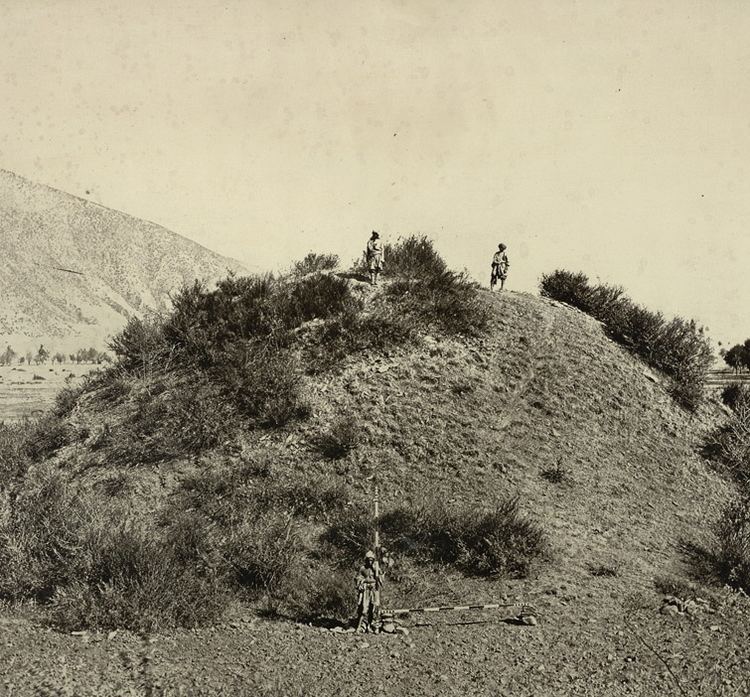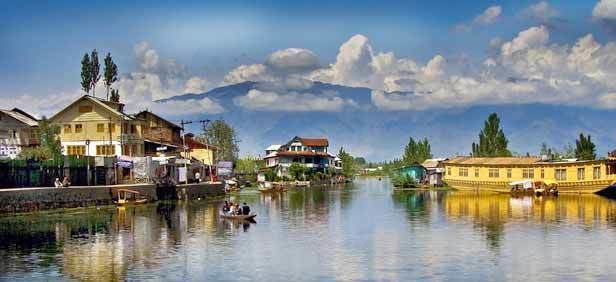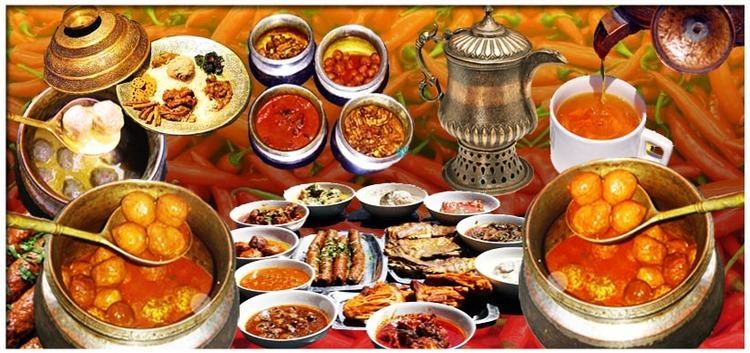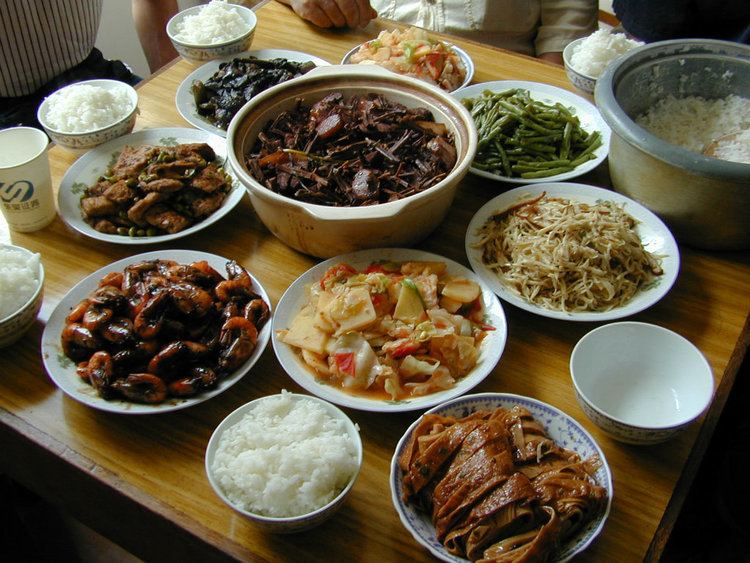Country Indian Area 222,236 km² Founded October 26, 1947 Population 12.55 million (2011) Capitals Jammu (Winter), Srinagar (Summer) | ||
Colleges and Universities University of Kashmir Points of interest Ladakh, Dal Lake, Vaishno Devi, Shalimar Bagh - Srinagar, Chashme Shahi Destinations Srinagar, Kashmir, Gulmarg, Jammu, Pahalgam | ||
Kashmir (Kashmiri:
Contents
- Map of Kashmir
- Top 10 amazing places to visit kashmir india
- History
- Culture and cuisine
- Economy
- History of tourism in Kashmir
- Kashmiri cuisine rista and gushtaba
- References
Map of Kashmir
In the first half of the 1st millennium, the Kashmir region became an important centre of Hinduism and later of Buddhism; later still, in the ninth century, Kashmir Shaivism arose. In 1349, Shah Mir became the first Muslim ruler of Kashmir, inaugurating the Salatin-i-Kashmir or Swati dynasty. For the next five centuries, Muslim monarchs ruled Kashmir, including the Mughals, who ruled from 1526 until 1751, and the Afghan Durrani Empire, which ruled from 1747 until 1820. That year, the Sikhs, under Ranjit Singh, annexed Kashmir. In 1846, after the Sikh defeat in the First Anglo-Sikh War, and upon the purchase of the region from the British under the Treaty of Amritsar, the Raja of Jammu, Gulab Singh, became the new ruler of Kashmir. The rule of his descendants, under the paramountcy (or tutelage) of the British Crown, lasted until 1947, when the former princely state of British India became a disputed territory, now administered by three countries: India, Pakistan, and the Peoples Republic of China.
Top 10 amazing places to visit kashmir india
History

The Buddhist Mauryan emperor Ashoka is often credited with having founded the old capital of Kashmir, Shrinagari, now ruins on the outskirts of modern Srinagar. Kashmir was long to be a stronghold of Buddhism.

As a Buddhist seat of learning, the Sarvastivadan school strongly influenced Kashmir. East and Central Asian Buddhist monks are recorded as having visited the kingdom. In the late 4th century CE, the famous Kuchanese monk Kumarajiva, born to an Indian noble family, studied Dirghagama and Madhyagama in Kashmir under Bandhudatta. He later became a prolific translator who helped take Buddhism to China. His mother Jiva is thought to have retired to Kashmir. Vimalaksa, a Sarvastivadan Buddhist monk, travelled from Kashmir to Kucha and there instructed Kumarajiva in the Vinayapitaka.
Adi Shankara visited the pre-existing Sarvajnapitha (Sharada Peeth) in Kashmir in late 8th century or early 9th century CE. The Madhaviya Shankaravijayam states this temple had four doors for scholars from the four cardinal directions. The southern door (representing South India) had never been opened, indicating that no scholar from South India had entered the Sarvajna Pitha. Adi Shankara opened the southern door by defeating in debate all the scholars there in all the various scholastic disciplines such as Mimamsa, Vedanta and other branches of Hindu philosophy; he ascended the throne of Transcendent wisdom of that temple.
Abhinavagupta (approx. 950 – 1020 CE) was one of Indias greatest philosophers, mystics and aestheticians. He was also considered an important musician, poet, dramatist, exeget, theologian, and logician – a polymathic personality who exercised strong influences on Indian culture. He was born in the Valley of Kashmir in a family of scholars and mystics and studied all the schools of philosophy and art of his time under the guidance of as many as fifteen (or more) teachers and gurus. In his long life he completed over 35 works, the largest and most famous of which is Tantraloka, an encyclopaedic treatise on all the philosophical and practical aspects of Trika and Kaula (known today as Kashmir Shaivism). Another one of his very important contributions was in the field of philosophy of aesthetics with his famous Abhinavabharati commentary of Natyasastra of Bharata Muni.
In the 10th century CE Moksopaya or Moksopaya Shastra, a philosophical text on salvation for non-ascetics (moksa-upaya: means to release), was written on the Pradyumna hill in Srinagar. It has the form of a public sermon and claims human authorship and contains about 30,000 shlokas (making it longer than the Ramayana). The main part of the text forms a dialogue between Vasistha and Rama, interchanged with numerous short stories and anecdotes to illustrate the content. This text was later (11th to the 14th century CE) expanded and vedanticised, which resulted in the Yoga Vasistha.
Culture and cuisine

Kashmiri cuisine includes dum aloo (boiled potatoes with heavy amounts of spice), tzaman (a solid cottage cheese), rogan josh (lamb cooked in heavy spices), yakhiyn (lamb cooked in curd with mild spices), hakh (a spinach-like leaf), rista-gushtaba (minced meat balls in tomato and curd curry), danival korme, and the signature rice which is particular to Asian cultures.
The traditional wazwan feast involves cooking meat or vegetables, usually mutton, in several different ways. Alcohol is strictly prohibited in most places.
There are two styles of making tea in the region: Noon Chai, or salt tea, which is pink in colour (known as chinen posh rang or peach flower colour) and popular with locals; and kahwah, a tea for festive occasions, made with saffron and spices (cardamom, cinamon, sugar, noon chai leaves), and black tea.
Economy
Kashmirs economy is centred around agriculture. Traditionally the staple crop of the valley was rice, which formed the chief food of the people. In addition, Indian corn, wheat, barley and oats were also grown. Given its temperate climate, it is suited for crops like asparagus, artichoke, seakale, broad beans, scarletrunners, beetroot, cauliflower and cabbage. Fruit trees are common in the valley, and the cultivated orchards yield pears, apples, peaches, and cherries. The chief trees are deodar, firs and pines, chenar or plane, maple, birch and walnut, apple, cherry.
History of tourism in Kashmir
The state of Jammu & Kashmir is a region of widely varying people and geography. In the south, Jammu is a transition zone from the Indian plains to the Himalayas. Nature has lavishly endowed Kashmir with certain distinctive features that are paralleled by few alpine regions in the world. It is the land of snow clad mountains that shares a common boundary with Afghanistan, China and Pakistan. Jammu and Kashmir is the northernmost state of the Indian Union. Known for its extravagant natural beauty this land formed a major caravan route in ancient times.
Trade relations through these routes between China and Central Asia made it a land inhabited by various religious and cultural groups. It was during the reign of Kashyapa that the various wandering groups led a settled life; Buddhist influenced Kashmir during the rule of Ashoka and the present town of Srinagar were founded by Kashyapa. This place was earlier called Srinagari or Purandhisthan. The Brahmins who inhabited these areas admired and adored Buddhism too. From the regions of Kashmir Buddhism spread throughout Ladakh, Tibet, Central Asia and China. Various traditions co-existed until the advent of the Muslims.
The Mughal had a deep influence on this land and introduced various reforms in the revenue industry and other areas that added to the progress of Kashmir. In 1820 Maharaj Gulab Singh got the Jagir of Jammu from Maharaj Ranjit Sigh. He is said to have laid the foundation of the Dogra dynasty. In 1846 Kashmir was sold to Maharaj Gulab Singh. Thus the two areas of Kashmir and Jammu were integrated into a single political unit. A few chieftains who formed part of the administration were of the Hunza, Kishtwar, Gilgit Ladakh. During the Dogra dynasty trade improved, along with the preservation and promotion of forestry.
Culture and cuisine

Kashmiri cuisine (Kashmiri: ; Kashur khyon) is based on the ancient traditions of the north-west Indian Kashmir area. The Rigveda mentions the meat eating traditions of this area while the ancient Kashmiri epic, the Nilamat Purana, records that Kashmiris were heavy meat eaters, a habit that persists to this day.
The most notable ingredient in todays Kashmir cuisine is mutton, of which there are over 30 varieties.
Kashmiri Pandits have had the earliest influence on Kashmiri cuisine. Although Pandits in other parts of the subcontinent do not normally eat meat, the Pandits of Kashmir have always eaten all meat except beef, which is strictly forbidden. Since most Kashmiri Muslims are converts from this Pandit community, the Kashmiri Muslim Wazwan also never uses Beef. This is in keeping with the age old Kashmiri tradition known as Kashmiriyat, much of the cuisine is similar between Kashmiri Pandits and Kashmiri Muslims. The wazwans of Kashmiri Muslims had a strong emphasis on goat, whereas Kashmiri Pandits prefer Lamb. The epic Nilamat Purana records that the Brahmins of Kashmir have always been heavy eaters of lamb and mutton.
Kashmiri cuisine rista and gushtaba
The two most important saints of Kashmir, Lalleshwari and Sheikh Noor-ud-din Wali were actually vegetarians for spiritual reasons. Meat is cooked in Kashmiri festivals and forms an extremely important part of Kashmiri identity. Some noted Kashmiri Pandit dishes include:
Kashmiri cuisine includes dum aloo (boiled potatoes with heavy amounts of spice), tzaman (a solid cottage cheese), rogan josh (lamb cooked in heavy spices), yakhiyn (lamb cooked in curd with mild spices), hakh (a spinach-like leaf), rista-gushtaba (minced meat balls in tomato and curd curry), danival korme, and the signature rice which is particular to Asian cultures.

The traditional wazwan feast involves cooking meat or vegetables, usually mutton, in several different ways. Alcohol is strictly prohibited in most places.
There are two styles of making tea in the region: Noon Chai, or salt tea, which is pink in colour (known as chinen posh rang or peach flower colour) and popular with locals; and kahwah, a tea for festive occasions, made with saffron and spices (cardamom, cinamon, sugar, noon chai leaves), and black tea.
